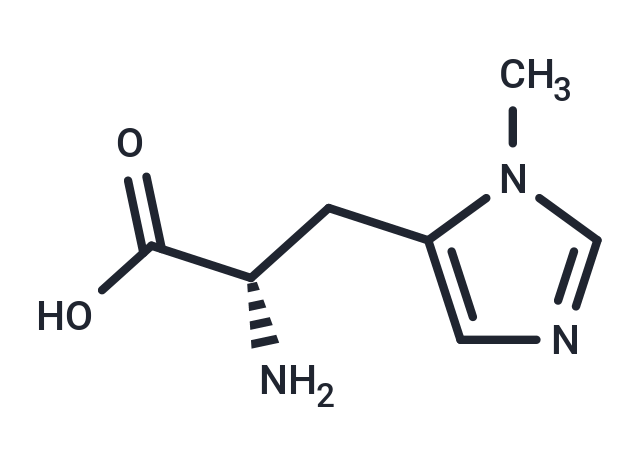- Remove All
 Your shopping cart is currently empty
Your shopping cart is currently empty
3-Methyl-L-histidine
3-Methylhistidine belongs to the class of organic compounds known as histidine and derivatives. Histidine and derivatives are compounds containing cysteine or a derivative thereof resulting from reaction of cysteine at the amino group or the carboxy group, or from the replacement of any hydrogen of glycine by a heteroatom. It is also a biomarker for the consumption of soy products. 3-Methylhistidine is a very strong basic compound (based on its pKa). 3-Methylhistidine exists in all eukaryotes, ranging from yeast to humans. In humans, 3-methylhistidine is involved in methylhistidine metabolism. 3-Methylhistidine, with regard to humans, has been found to be associated with several diseases such as diabetes mellitus type 2, eosinophilic esophagitis, and kidney disease; 3-methylhistidine has also been linked to the inborn metabolic disorder propionic acidemia. The measurement of 3-methylhistidine provides an index of the rate of muscle protein breakdown. 3-Methylhistidine is a product of peptide bond synthesis and methylation of actin and myosin. 3-Methylhistidine is a biomarker for meat consumption, especially chicken.Structure

3-Methyl-L-histidine
| Pack Size | Price | Availability | Quantity |
|---|---|---|---|
| 25 mg | $37 | In Stock | |
| 50 mg | Inquiry | In Stock |
Product Introduction
| Description | 3-Methylhistidine belongs to the class of organic compounds known as histidine and derivatives. Histidine and derivatives are compounds containing cysteine or a derivative thereof resulting from reaction of cysteine at the amino group or the carboxy group |
| Molecular Weight | 169.18 |
| Formula | C7H11N3O2 |
| Cas No. | 368-16-1 |
| Smiles | Cn1cncc1C[C@H](N)C(O)=O |
| Relative Density. | 1.37g/cm3 |
| Storage | Powder: -20°C for 3 years | In solvent: -80°C for 1 year | Shipping with blue ice. | ||||||||||||||||||||||||||||||||||||||||
| Solubility Information | H2O: 100 mg/mL (591.09 mM), Sonication is recommended. DMSO: 3.46 mg/mL (20.46 mM), Sonication is recommended. | ||||||||||||||||||||||||||||||||||||||||
Solution Preparation Table | |||||||||||||||||||||||||||||||||||||||||
DMSO/H2O
H2O
| |||||||||||||||||||||||||||||||||||||||||
Calculator
In Vivo Formulation Calculator (Clear solution)
Dose Conversion
Tech Support
Keywords

Copyright © 2015-2025 TargetMol Chemicals Inc. All Rights Reserved.



